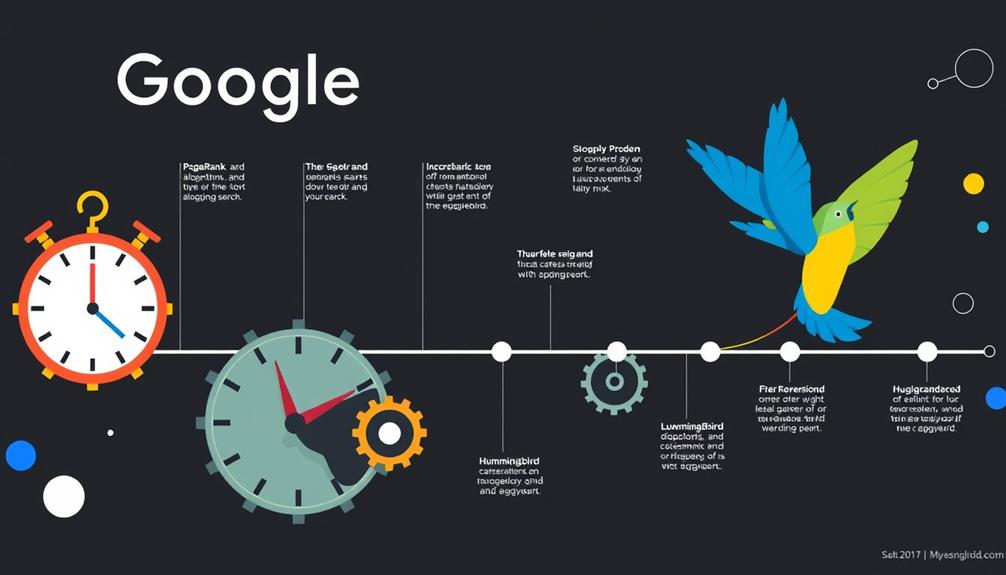Celebrities like Christian Bale, Kumail Nanjiani, and Brie Larson underwent drastic physical transformations for their movie roles through intense workouts and strict diets. Jake Gyllenhaal packed on 28 pounds of muscle with daily boxing training for "Southpaw". Matthew McConaughey dropped 47 pounds for "Dallas Buyers Club" by following a strict regimen. Jared Leto, Chadwick Boseman, and Michael Fassbender also demonstrated versatility and commitment in their physical transformations for roles. From gaining muscle like Hilary Swank to shedding weight like Tom Hardy and Natalie Portman, these celebrities exhibit unwavering dedication to their craft and roles, inspiring viewers with their transformations.
Key Takeaways
- Christian Bale's extreme weight fluctuations for character authenticity.
- Kumail Nanjiani's physical transformation for 'Eternals' role.
- Brie Larson's muscle gain through intense strength training.
- Jake Gyllenhaal's 28-pound muscle gain for Southpaw.
- Matthew McConaughey's 47-pound weight loss for 'Dallas Buyers Club'.
Christian Bale
Christian Bale's remarkable body transformations for various movie roles have captivated audiences and critics alike. Known for his extreme weight fluctuations, Bale has undergone drastic changes to embody his characters authentically. His dedication to his craft is evident in the lengths he goes to for his roles, from starving himself to bulking up immensely.
Bale's versatility as an actor shines through in his ability to completely transform his body, impressing both the public and critics. Bale's commitment to his physical transformations is a proof of his professionalism and passion for acting. The intense workout regimens and strict diets he follows under professional supervision highlight his meticulous approach to character portrayal.
His willingness to undergo extreme measures showcases a level of dedication that's truly commendable in the entertainment industry. Bale's ability to completely change his appearance and physique for different roles sets him apart as a versatile and dedicated actor.
Kumail Nanjiani

Kumail Nanjiani's physical transformation for his role in 'Eternals' has garnered widespread attention. By collaborating with trainers and nutritionists, he achieved a muscular physique that left many in awe. Nanjiani's journey highlights the importance of hard work, dedication, and discipline in achieving fitness goals.
Kumail's Fitness Journey
During his fitness journey for his role in 'Eternals,' Kumail Nanjiani underwent a remarkable transformation by focusing on intense workouts and strict nutrition. To prepare for his character in the Marvel film, Kumail dedicated himself to gaining significant muscle mass through rigorous training regimens and carefully planned dietary choices.
Under the guidance of trainers and nutritionists, he followed a structured workout routine tailored to building strength and endurance while adhering to a strict nutrition plan to support his physical transformation.
Kumail's commitment to his fitness journey was evident in his social media posts, where he shared glimpses of his progress, inspiring many with his dedication and hard work. Expressing gratitude for the support he received throughout his transformation, Nanjiani emphasized the importance of discipline and perseverance in achieving his fitness goals.
His journey showcases the transformative power of dedication and determination in reshaping one's physique.
Workout Routine Changes
Throughout his fitness journey for 'Eternals,' Kumail Nanjiani implemented significant changes to his workout routine to achieve a remarkable transformation. He dedicated himself to intense weightlifting sessions and adhered strictly to a structured exercise plan. By collaborating closely with trainers and nutritionists, Kumail made sure that his workout routine was optimized for his goals. His commitment to training and discipline was evident in the results he achieved, showcasing a muscular and toned physique that impressed many. The changes in Kumail's workout routine were a vital component of his overall transformation, contributing to the success of his celebrity makeover. The consistent effort he put into his training regimen exemplifies the level of determination required for such significant changes. Below is a table highlighting key aspects of Kumail Nanjiani's workout routine changes:
| Aspect | Details | Importance |
|---|---|---|
| Weightlifting | Intense sessions to build muscle mass | Vital |
| Structured Exercise | Strict adherence for optimal results | Essential |
| Collaboration | Working with trainers and nutritionists | Beneficial |
| Commitment | Consistent training and discipline | Key to success |
| Transformation | Achieved a muscular and toned appearance | Evident results |
Diet Transformation Secrets
After focusing on his workout routine changes, the spotlight now turns to revealing the diet transformation secrets that contributed to Kumail Nanjiani's impressive physique for 'Eternals'.
Here are some key points regarding Nanjiani's diet transformation:
- Strict Diet Plan: Nanjiani followed a meticulously crafted diet plan to support his intense workout regimen, emphasizing lean proteins, complex carbohydrates, and healthy fats.
- Working with Trainers: He collaborated closely with experienced trainers who tailored his diet to meet the specific demands of his body transformation goals.
- Nutritionists Guidance: Professional nutritionists played a pivotal role in optimizing Nanjiani's dietary intake to make certain he was fueling his body effectively for muscle gain and fat loss.
- Disciplined Eating Habits: Nanjiani's success can be attributed to his disciplined approach to eating, sticking to his nutrition plan religiously and avoiding temptations.
- Celebrity Body Transformations Inspiration: By sharing his journey on social media, Nanjiani inspired countless individuals with his dedication to achieving a remarkable physical transformation through his diet and exercise commitment.
Brie Larson

Brie Larson diligently transformed her body from inactivity to pure muscle to embody the powerful superhero character of Captain Marvel. In preparation for the role, Larson underwent a remarkable physical transformation, focusing on muscle gain through intense strength training. Working closely with trainers, she adhered to a rigorous workout routine that included a combination of weightlifting, cardio, and conditioning exercises.
Larson's dedication to her fitness regimen was evident in her commitment to portraying Captain Marvel authentically, showcasing not only her acting prowess but also her physical prowess. The intense strength training and conditioning that Larson underwent not only sculpted her physique but also enhanced her overall strength and endurance, enabling her to perform the demanding stunts required for the role.
Her muscle gain transformation underscored her hard work and dedication to meeting the physical demands of portraying a superhero on the big screen. Through her perseverance and dedication, Larson successfully transformed her body to embody the iconic character of Captain Marvel.
Jake Gyllenhaal

During his preparation for the role in Southpaw, Jake Gyllenhaal gained 28 pounds of muscle through six hours of daily training with a boxing coach. The intense training regimen lasted for six months, showcasing Gyllenhaal's commitment to embodying the character authentically.
Here are some key points highlighting his transformation:
- Gyllenhaal dedicated six hours a day to training, demonstrating his strong work ethic and determination.
- The actor gained an impressive 28 pounds of muscle, notably altering his physique for the role.
- Working closely with a boxing coach, Gyllenhaal honed his skills and technique to portray a professional fighter convincingly.
- Immersing himself in the world of boxing, Gyllenhaal trained alongside real fighters to understand the sport's nuances and challenges.
- His rigorous routine included activities like running, shadow boxing, and footwork drills, showcasing his versatility and commitment to the role.
The transformation not only impressed the director but also highlighted Gyllenhaal's ability to undergo physical changes for his craft.
Matthew McConaughey

Matthew McConaughey underwent a remarkable physical transformation by losing 47 pounds for his role in 'Dallas Buyers Club.' In the film, he portrayed the character of Ron Woodroof, a man diagnosed with AIDS.
McConaughey's dedication to the role led him to shed the weight through a strict diet and intense cardio workouts. This drastic change in his physique not only showcased his commitment to his craft but also earned him critical acclaim, culminating in an Academy Award for Best Actor.
The actor's portrayal of Woodroof wasn't only emotionally impactful but also physically demanding, requiring him to embody the character authentically. McConaughey's ability to undergo such a significant physical transformation highlights his versatility as an actor and his willingness to go above and beyond to deliver a compelling performance.
His journey in 'Dallas Buyers Club' stands as a confirmation of his dedication to his art and the lengths he's willing to go to for a role.
Jared Leto

Jared Leto underwent a significant physical transformation by losing 30 pounds for his role in 'Dallas Buyers Club,' portraying a transgender woman with AIDS. His extreme weight loss was achieved through a strict diet and intense workouts. Leto's dedication to the role was evident in his commitment to transforming his body, showcasing his versatility as an actor. This transformation not only highlighted his physical prowess but also his emotional depth in portraying complex characters.
Leto's portrayal earned him critical acclaim and the prestigious Academy Award for Best Supporting Actor, solidifying his status as a versatile and dedicated performer.
- Lost Weight: Leto shed 30 pounds for his role in 'Dallas Buyers Club.'
- Dedication: His commitment to the extreme weight loss and physical transformation was unwavering.
- Critical Acclaim: Leto's performance earned him praise from critics and audiences alike.
- Academy Award: He won the Oscar for Best Supporting Actor for his role in the film.
- Versatility: Leto's ability to fully embody his characters was on full display in this transformative role.
Chadwick Boseman

Chadwick Boseman diligently transformed his physique for the role of Black Panther through intensive weight training and martial arts practice. His commitment to achieving the ideal look for the iconic superhero involved rigorous workout routines aimed at building muscle mass and attaining a shredded, athletic appearance. Boseman's dedication to his physical transformation was evident in his focused approach to training, emphasizing both strength and agility to embody the character authentically.
The actor's muscular and lean physique in Black Panther served as a confirmation to the remarkable results of his intense preparation. By combining weight training with martial arts practice, Chadwick Boseman not only physically transformed himself but also honed the necessary skills to portray the powerful and agile Marvel character convincingly. His portrayal of Black Panther highlighted both his physical prowess and his unwavering commitment to bringing the superhero to life on the big screen.
Michael Fassbender

In preparation for his role in 'Hunger', Michael Fassbender underwent a significant weight loss transformation shedding 35 pounds. The weight loss was a vital element in accurately portraying a hunger striker on screen. Fassbender's commitment to the physical transformation required for the role exemplified his dedication to his craft.
The intense preparation he endured showcased his willingness to undergo significant changes for the authenticity of his character, reflecting a deep level of commitment.
- Fassbender lost 35 pounds for 'Hunger'.
- The weight loss was essential for portraying a hunger striker.
- His physical transformation was a sign of his commitment.
- The intense preparation highlighted his dedication to the role.
- Fassbender's willingness to undergo significant changes for authenticity was evident.
Hilary Swank
For her role in 'Million Dollar Baby', Hilary Swank gained 19 pounds of muscle through intense physical training. The demanding nature of the film required Swank to undergo a significant body transformation to embody the character of a determined boxer.
Her commitment to authenticity in portraying the boxer's journey resonated with audiences and critics alike, ultimately earning her an Oscar for Best Actress. Swank's dedication to the role highlighted the lengths actors go to in preparing for challenging and physically demanding roles.
The physical training she endured showcased her willingness to push her limits and immerse herself fully in the character she was portraying. This transformation not only demonstrated Swank's versatility as an actress but also underscored her unwavering dedication to her craft.
The recognition she received for her performance in 'Million Dollar Baby' solidified her reputation as a committed and talented performer in the industry.
Chris Hemsworth

Gaining 20 pounds of muscle through a high-protein diet and varied lifting routine, Chris Hemsworth transformed his body for the role of Thor. His commitment to embodying the powerful Marvel character led him to adjust his workout routine, focusing on arms and shoulders to achieve the god-like physique required for the role.
Hemsworth's dedication to fitness and nutrition not only helped him excel in the initial Thor movie but also enabled him to maintain his muscular appearance through subsequent Marvel film appearances. The actor's physical transformation for Thor was so significant that it necessitated alterations to his costumes to accommodate his increased muscle mass.
- Hemsworth gained 20 pounds of muscle for his role as Thor.
- He tailored his workout routine and diet to match the demands of the character.
- The focus of his training was on developing his arms and shoulders.
- Hemsworth's commitment to fitness allowed him to sustain his physique for multiple Marvel films.
- His increased muscle mass required adjustments to his costumes.
Joaquin Phoenix

Joaquin Phoenix underwent a significant physical transformation by losing 52 pounds for his role in 'Joker.' To achieve this weight loss, Phoenix adhered to a strict diet and engaged in an intense workout regimen. His dedication to altering his physique was pivotal in portraying the character's psychological descent into the iconic Joker.
The commitment and effort he put into his transformation didn't go unnoticed, as Phoenix received critical acclaim for his performance, ultimately winning the Academy Award for Best Actor. Phoenix's ability to embody the character's physicality and emotional depth through his weight loss showcased his unwavering commitment to his craft.
His transformation not only captured the essence of the character but also demonstrated his willingness to go to great lengths to deliver an authentic and compelling performance.
50 Cent

50 Cent underwent a remarkable weight loss transformation, dropping from 214 pounds to 160 pounds for a specific movie role. This significant change in weight showcased his dedication to embodying the character authentically on screen.
The drastic transformation in his body highlighted the lengths to which celebrities go to portray roles convincingly. Some key points to note about 50 Cent's weight loss journey include:
- The substantial weight loss of over 50 pounds emphasized the intensity of his physical transformation.
- His commitment to altering his body for the role demonstrated a high level of professionalism in the acting industry.
- 50 Cent's weight loss regimen not only changed his appearance but also underscored his willingness to undergo challenging transformations.
The weight loss transformation for his movie role exemplified the lengths celebrities are willing to go for their craft. 50 Cent's dedication to embodying the character through his physical changes showcased his versatility as an actor.
Tom Hardy

Tom Hardy underwent a significant physical transformation by putting on 30 pounds of muscle for his role as Bane in 'The Dark Knight Rises.' To achieve this muscular physique, Hardy adopted a rigorous workout regimen consisting of four short strength training sessions daily.
His dedication to building muscle mass for the iconic villain role was evident in the remarkable transformation his body underwent. Unlike relying solely on strict dieting, Hardy focused on intense strength training sessions to sculpt his body into the formidable form required for the character.
Through his commitment to physical training, Hardy successfully bulked up and embodied the imposing presence of Bane in the film. His disciplined approach to fitness not only enhanced his appearance on screen but also showcased his determination to fully embody the characters he portrays.
Tom Hardy's remarkable muscle gain for 'The Dark Knight Rises' stands as a testament to his dedication to transforming his physique for his roles.
Natalie Portman

Natalie Portman's dedication to her role in 'Black Swan' led her to undergo a remarkable physical transformation by shedding 20 pounds to embody a ballerina's physique. She trained intensively in ballet for over a year to master the physicality and grace of the art form. Portman's transformation included rigorous daily workouts, ballet training, and strict dietary changes.
Her commitment to the role earned her critical acclaim and an Academy Award for Best Actress. Portman's dedication to the role showcased her ability to undergo significant physical transformations for her craft. The demanding regimen she adhered to highlights her discipline and commitment to her roles, setting a high standard for method acting in the industry.
Natalie Portman's portrayal in 'Black Swan' not only captivated audiences but also underscored her willingness to push her physical limits for the sake of authenticity in her performances. Her dedication to transforming her body and honing her skills in ballet exemplifies the lengths to which she's willing to go for her art, solidifying her reputation as a versatile and committed actress.
Michael B. Jordan

Michael B. Jordan's physical transformation for his role in 'Creed' was no small feat. His rigorous training program, overseen by a personal trainer, included weight training, boxing workouts, and cardio to achieve a muscular physique befitting a boxer.
Jordan's commitment to his fitness regimen and strict diet not only altered his body but also helped him fully embody the character of Adonis Creed on screen.
Training Regimen Secrets
For his role in 'Creed,' Michael B. Jordan implemented a rigorous training regimen that consisted of two to three hours of intense workouts six days a week, emphasizing boxing and weightlifting.
Jordan worked closely with his personal trainer, Corey Calliet, to sculpt his physique for the film.
The actor committed to lifting weights every day, focusing on both strength and conditioning exercises.
His dedication to the training program led to a major body transformation, shedding around 20 pounds to embody the character of Adonis Creed.
Jordan's collaboration with some of the best trainers and nutritionists in the industry ensured he had the guidance needed to achieve his fitness goals.
The intense workouts and strict regimen Jordan followed exemplify his commitment to the role, showcasing his determination and discipline in achieving a professional boxer's physique on screen.
Diet Transformation Impact
The diet transformation impact on Michael B. Jordan's physique for his role as Adonis Creed in 'Creed' was significant. To achieve the muscular physique required for the character, Jordan had to completely transform his eating habits. He followed strict meal plans that involved eating a lot of lean proteins and complex carbs to fuel his body for the intense physical demands of the role. Jordan also incorporated intermittent fasting into his routine, limiting the hours a day he consumed food to optimize muscle recovery and fat burning. By focusing on high protein intake, he supported the growth of muscle to play the boxer convincingly on screen. This structured approach to his diet played a crucial role in his transformation, complementing his rigorous training regimen. Jordan's dedication to both his diet and training routine showcases the level of commitment required to undergo such a remarkable physical change for a role.
| Keyword | Description | Example |
|---|---|---|
| Hours a day | Jordan limited his eating window for intermittent fasting | 8 hours a day |
| Eating a lot | Consuming a significant amount of lean proteins and carbs | Protein shakes and chicken breast |
| Muscle to play | Diet focused on supporting muscle growth and recovery | High protein intake |
| Muscle recovery | Structured eating schedule optimized for recovery | Scheduled post-workout meals |
Body Change Timeline
Jordan's body change timeline for his role in 'Creed' showcased a disciplined approach to fitness and dedication to his character's physical transformation. Over the span of six months, Michael B. Jordan underwent a remarkable shift, adding pounds of muscle to sculpt a ripped physique that embodied the essence of Adonis Creed.
His journey towards achieving this transformation was marked by intense workouts that pushed his physical limits and a structured exercise routine meticulously designed to maximize muscle growth and strength. Collaborating closely with a personal trainer, Jordan committed himself wholeheartedly to the demanding regimen, demonstrating a level of dedication that impressed both fans and critics alike.
The actor's unwavering focus on his body transformation not only elevated his performance in the film but also served as an inspiration to many aspiring fitness enthusiasts seeking to start on their own transformative journeys.
- Six months of dedicated training
- Adding pounds of muscle for a ripped physique
- Intense workouts pushing physical limits
- Structured exercise routine for muscle growth
- Collaboration with a personal trainer
Frequently Asked Questions
How Do Celebrities Get Fit so Fast?
Celebrities get fit fast through intense workouts, strict diets, and expert guidance. They follow customized regimens focusing on weightlifting, cardio, and sports-specific training. Quick body transformations involve high-protein diets, calorie management, and tailored workouts.
Can You Completely Transform Your Body?
Yes, anyone can completely transform their body with dedication, consistency, and proper guidance. By combining healthy eating, regular exercise, and expert advice, individuals can achieve significant physical changes and improve their overall well-being.
How Do Celebs Lose Weight so Fast?
When shedding weight quickly, celebs often immerse themselves in intense workouts and strict diets, guided by professionals. It's like sprinting a marathon—hard, fast, with precision, fueled by dedication and strong support.
What Actress Had the Best Body?
She believes Scarlett Johansson's physique stood out as the best, attributing it to a mix of weightlifting, martial arts, and gymnastics training. The actress showcased a strong and athletic body in the Avengers films.
Conclusion
To sum up, these 15 celebrities have shown incredible dedication and hard work in transforming their bodies for their roles or personal goals. From Christian Bale's drastic weight changes to Kumail Nanjiani's impressive muscle gains, each individual has pushed themselves to new physical limits.
Their transformations serve as a reminder that with determination and perseverance, anyone can achieve their desired fitness goals. These celebrities have proven that with the right mindset and commitment, anything is possible.









